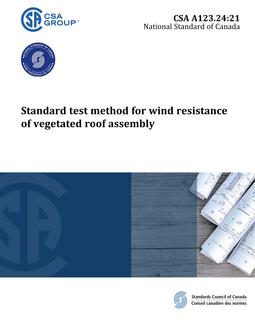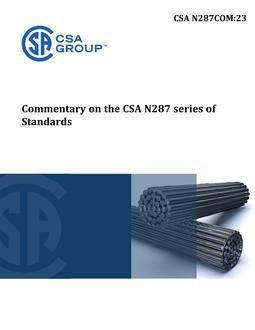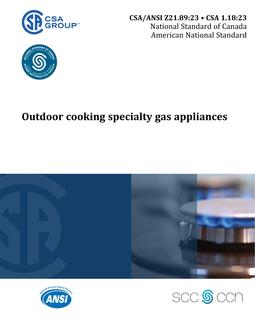
CSA A123.24:21
- Comments Off on CSA A123.24:21
- CSA
Click here to purchase
Preface:
This is the second edition of CSA A123.24, Standard test method for wind resistance of vegetated roof assembly. It supersedes the previous edition published in 2015, under the title Standard test method for wind resistance of modular vegetated roof assembly.
The previous edition was limited to modular vegetated roof assembly (MVRA). This edition introduces the specimen requirements, test methodology, and failure criteria for the built in place vegetated roof assembly (BVRA). BVRA and MVRA covers over 80% of the Canadian vegetated roof assembly market share. This edition is also updated to align with the NBCC 2015’s load resistance factor design procedure.
This Standard is based on the ongoing research and testing that is being carried out at the National Research Council Canada (NRCC). This document provides requirements for wind resistance testing of vegetated roof assemblies. The requirements specified include specimen set-up, instrumentation and apparatus, testing procedures, and termination.
CSA Group acknowledges that the development of this Standard was made possible, in part, by the financial support from the SIGDERS-VRA consortia managed by the Canadian Roofing Contractors’ Association (CRCA).
This Standard has been developed in compliance with Standards Council of Canada requirements for National Standards of Canada. It has been published as a National Standard of Canada by CSA Group.
Scope:
1.1 General
The test method in this Standard determines the wind resistance of vegetated roof assembly when subjected to dynamic wind flow and dynamic wind uplift in laboratory conditions.
1.2 Applicability
Testing in accordance with the test method in this Standard is applicable to modular and built-in-place vegetated roof systems.
1.3 Exceptions
Testing in accordance with the test method in this Standard is not applicable to mechanically attached membrane roofing system as defined in Clause 3 of CSA A123.21.
1.4 Terminology
In this Standard, “shall” is used to express a requirement, i.e., a provision that the user is obliged to satisfy in order to comply with the Standard; “should” is used to express a recommendation or that which is advised but not required; and “may” is used to express an option or that which is permissible within the limits of the Standard. Notes accompanying clauses do not include requirements or alternative requirements; the purpose of a note accompanying a clause is to separate from the text explanatory or informative material. Notes to tables and figures are considered part of the table or figure and may be written as requirements. Annexes are designated normative (mandatory) or informative (non-mandatory) to define their application.
1.5 Units of measurement
The values given in SI units are the units of record for the purposes of this Standard. The values given in parentheses are for information and comparison only.
Product Details
- Edition:
- 2nd
- Published:
- 02/01/2021
- ISBN(s):
- 9781488333804
- Number of Pages:
- 25
- File Size:
- 1 file , 3 MB
- Product Code(s):
- 2428766, 2428766



